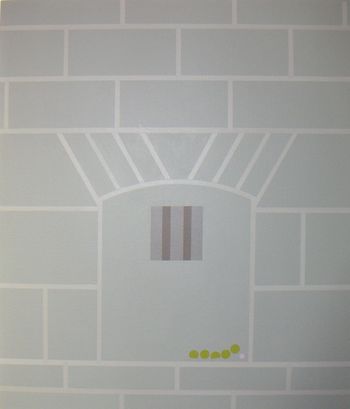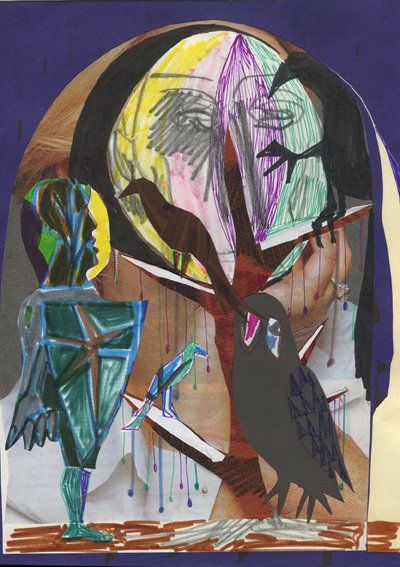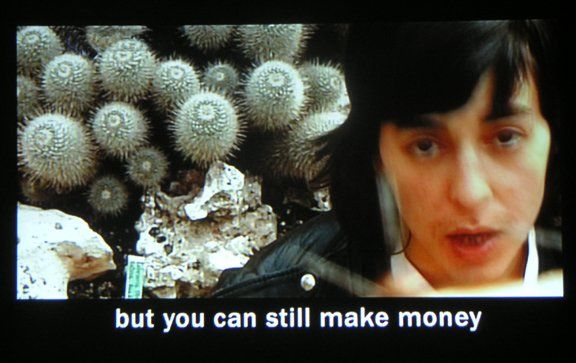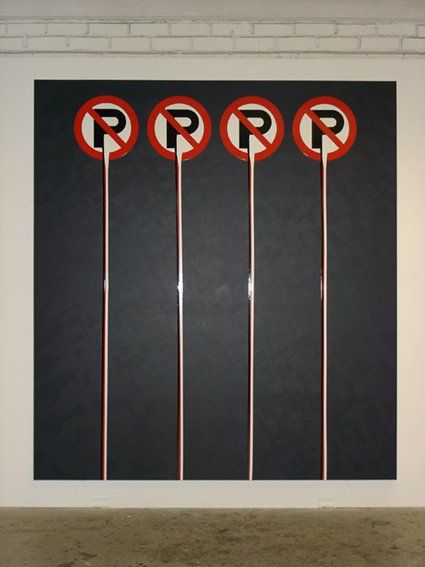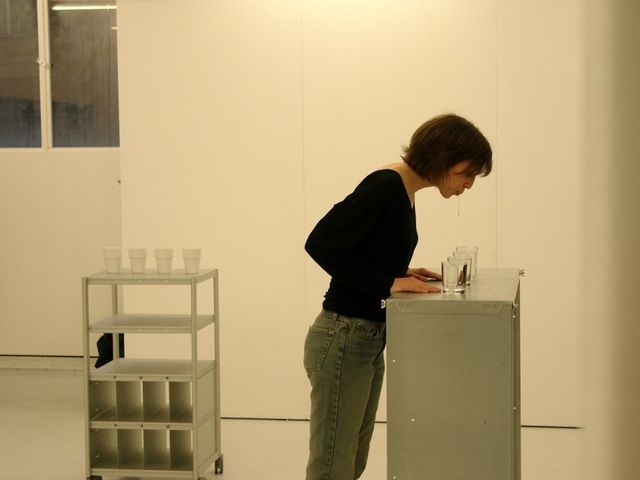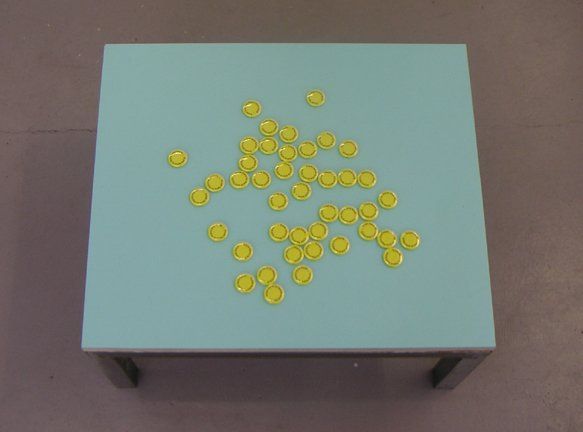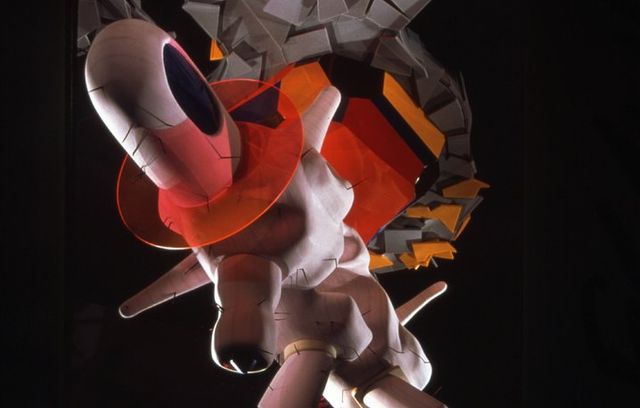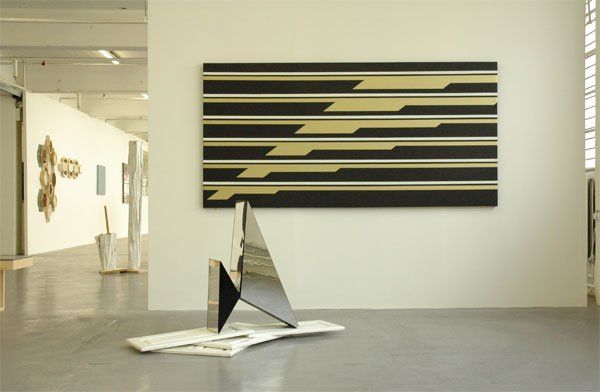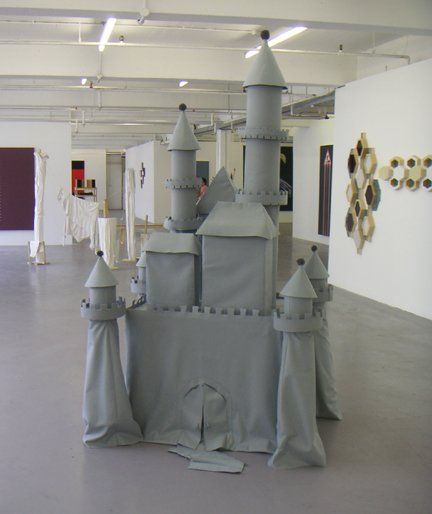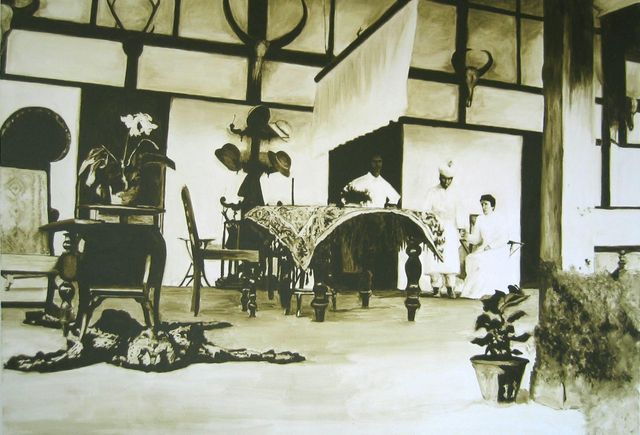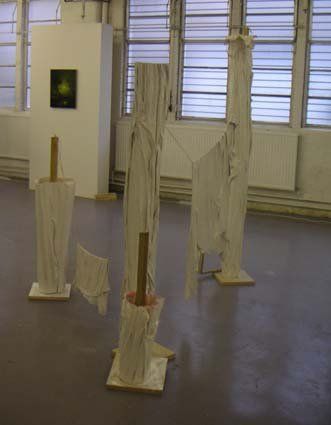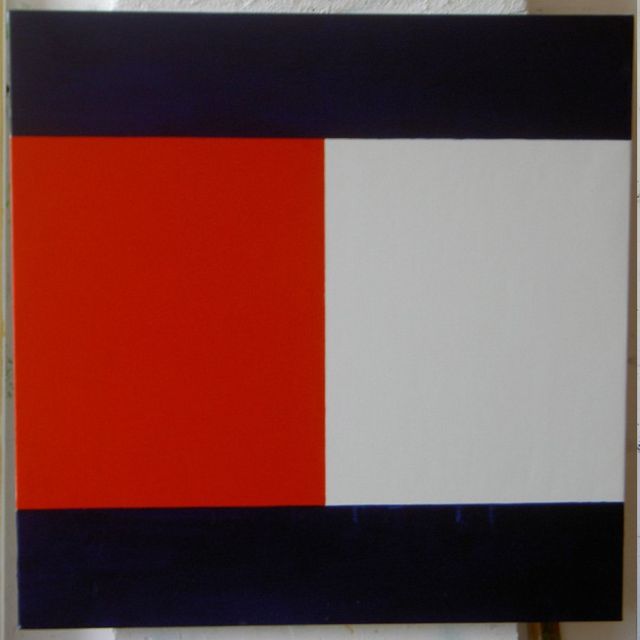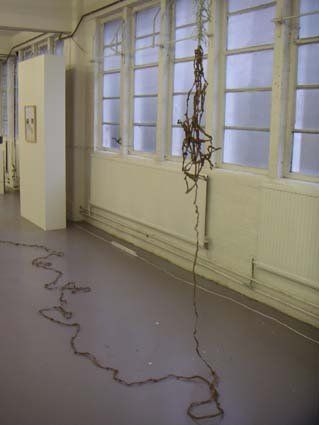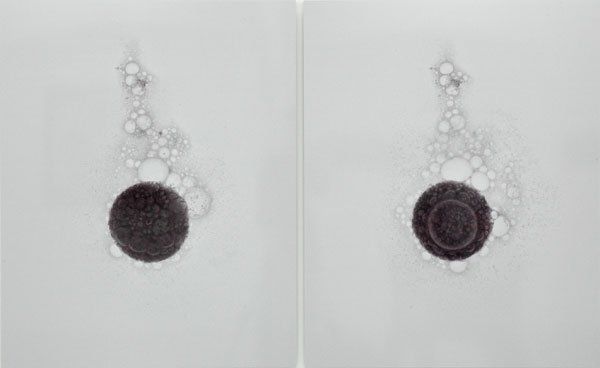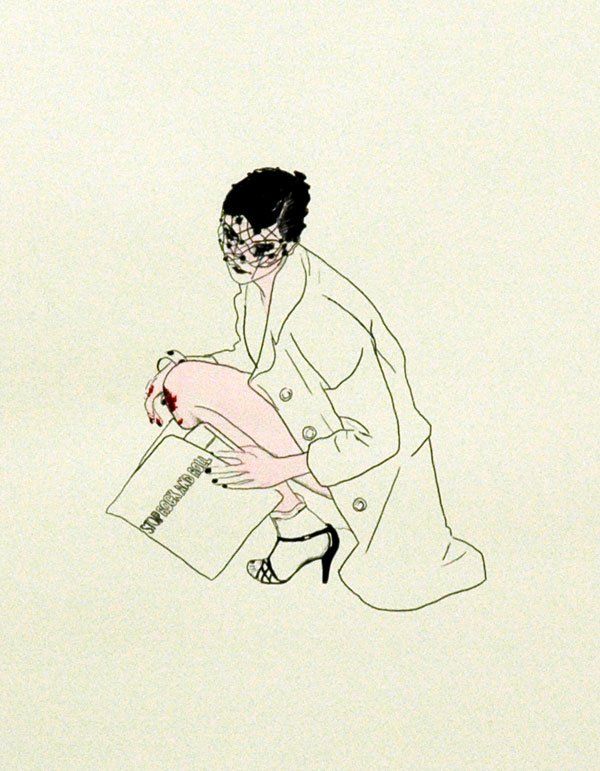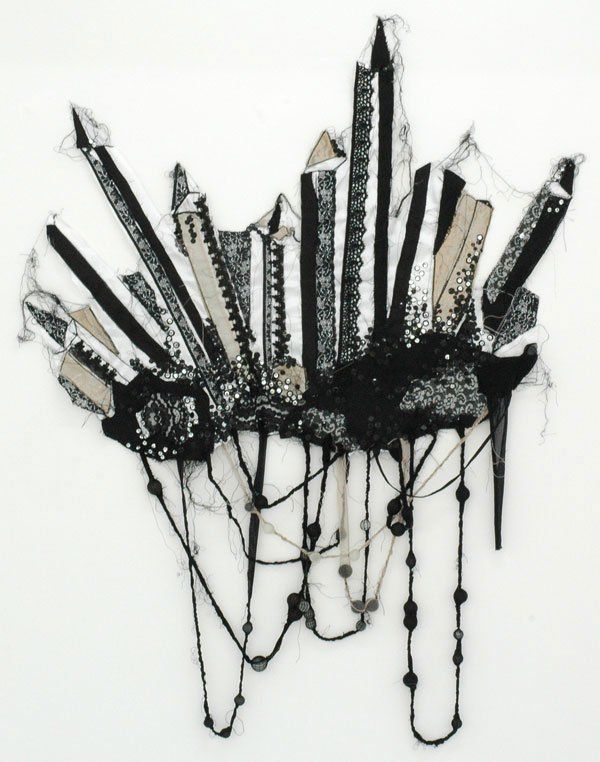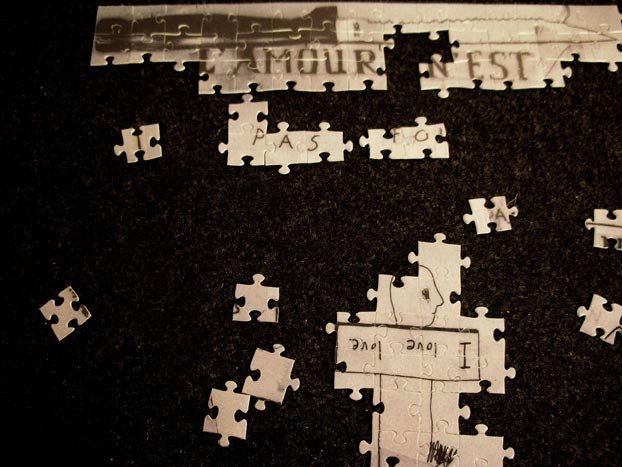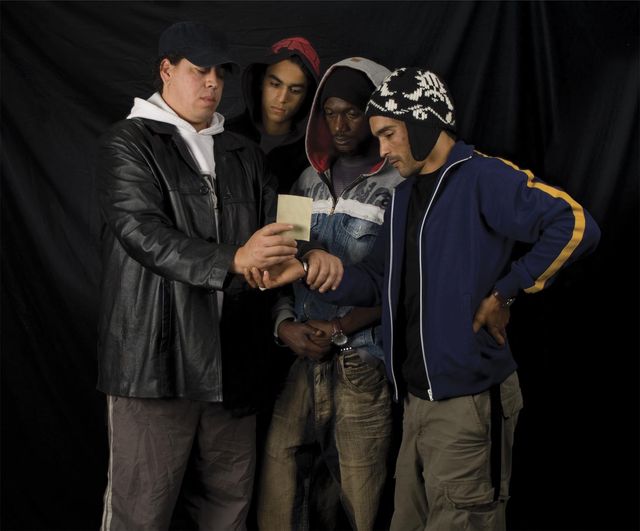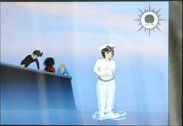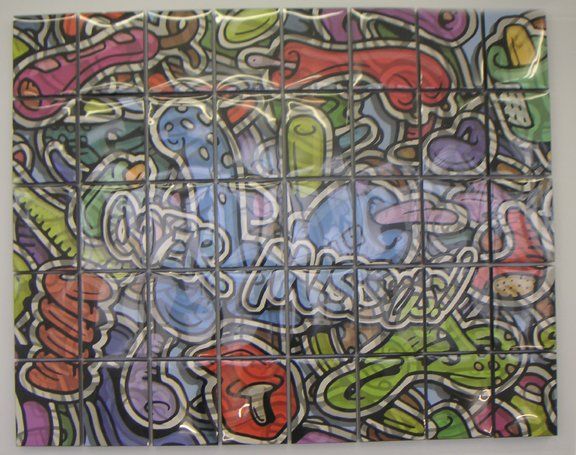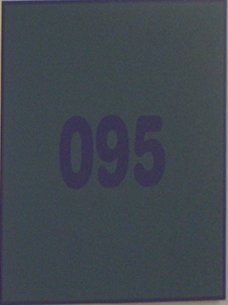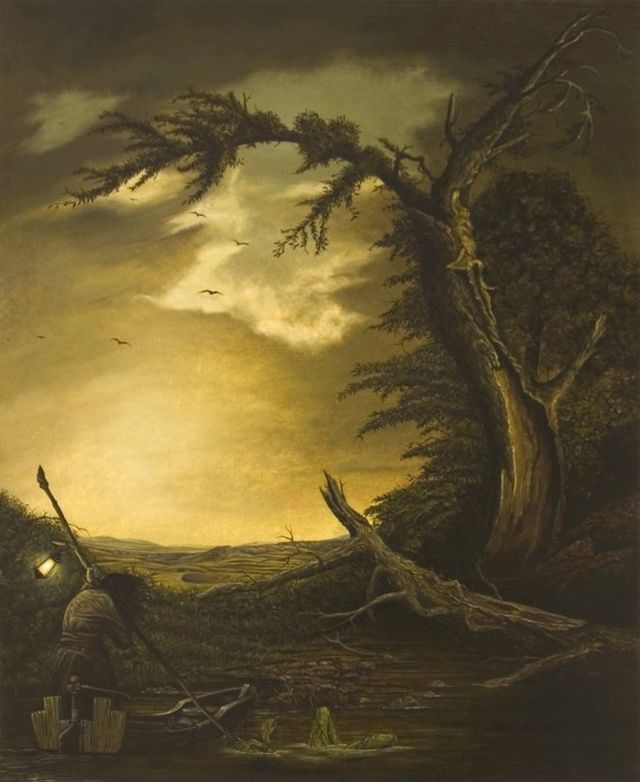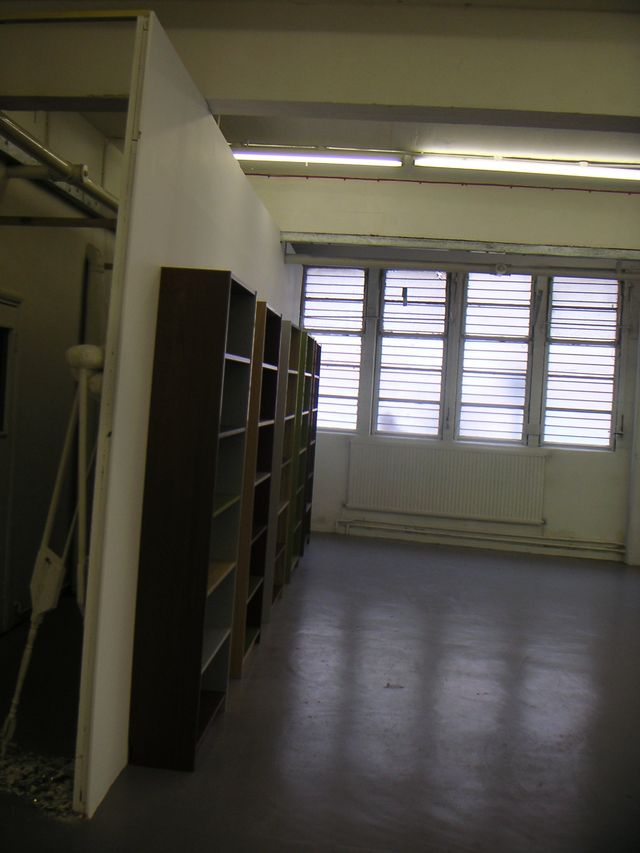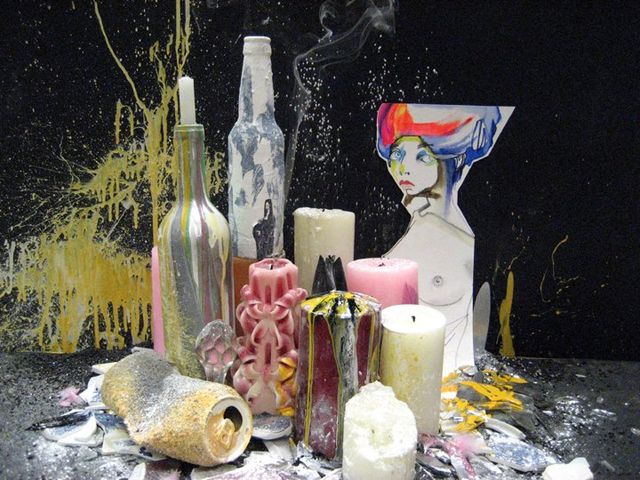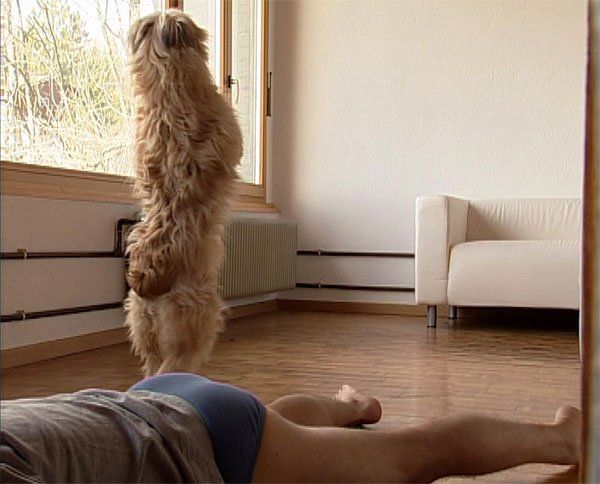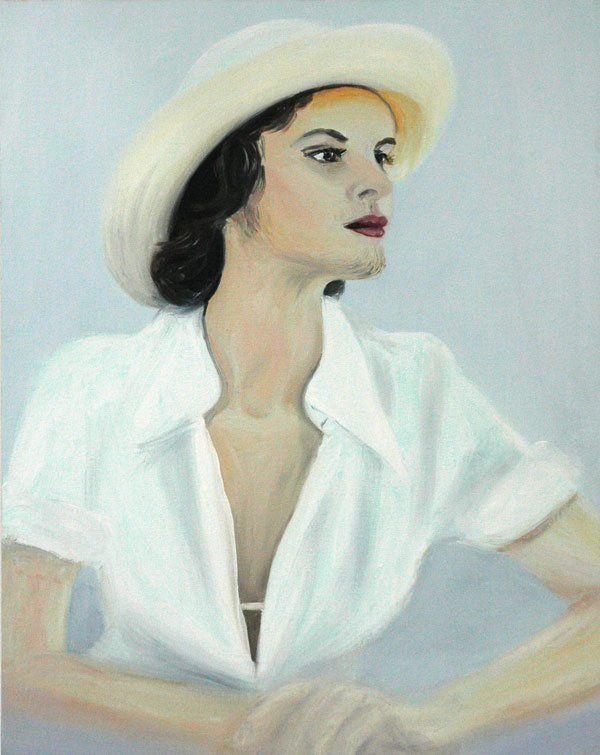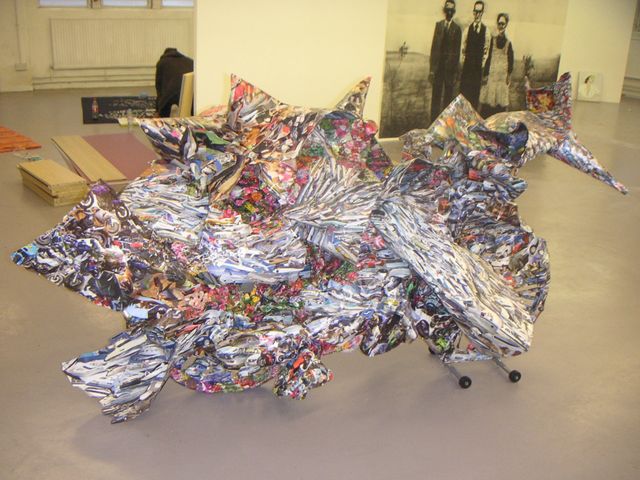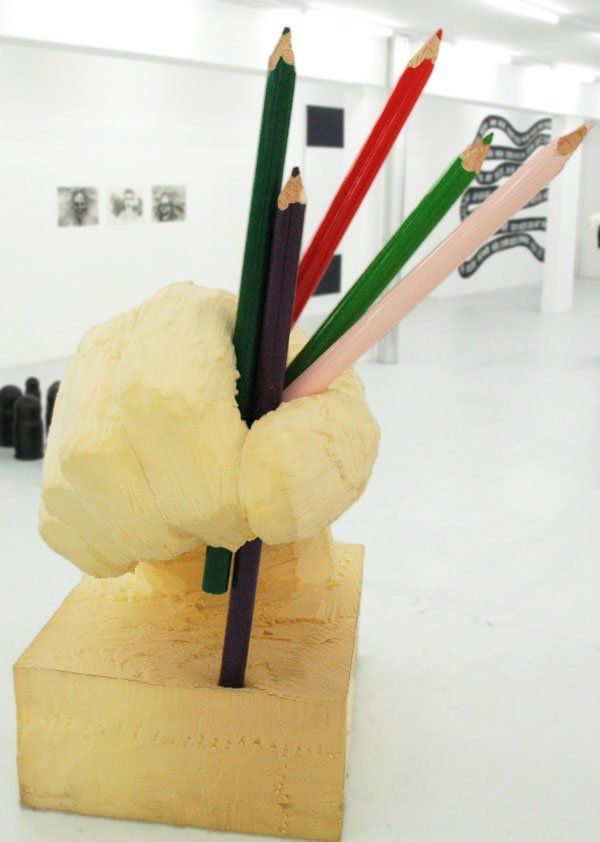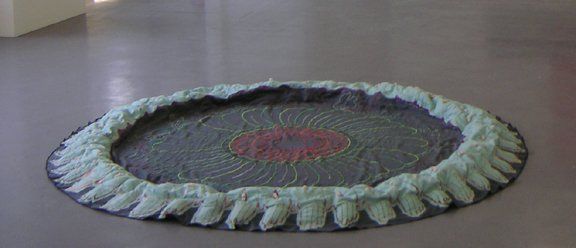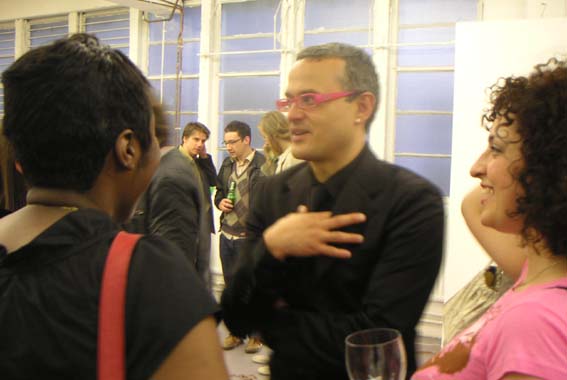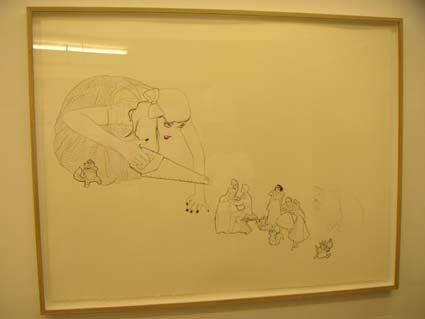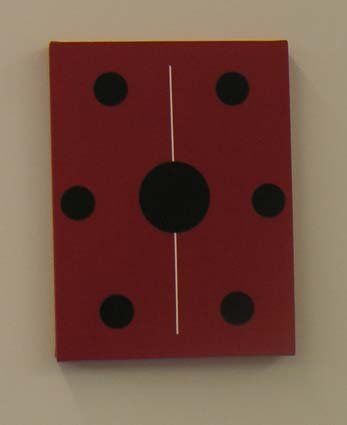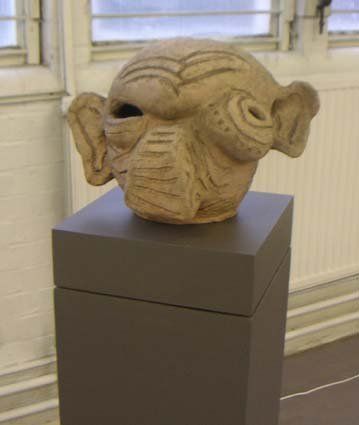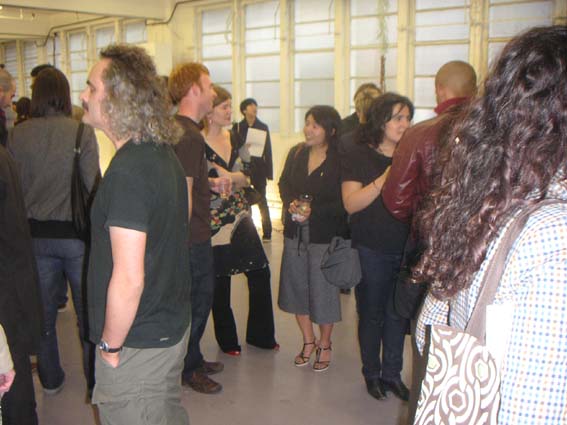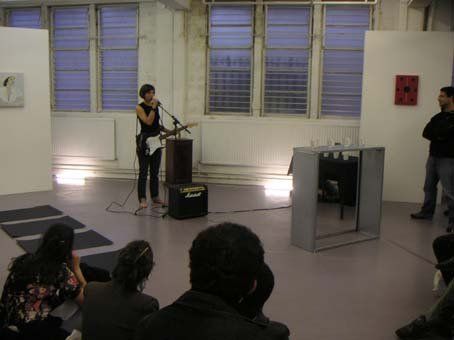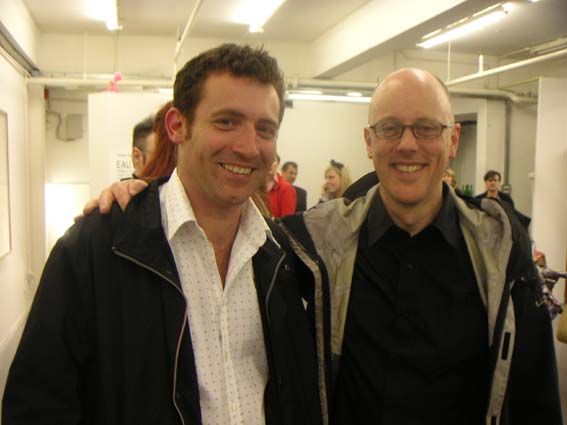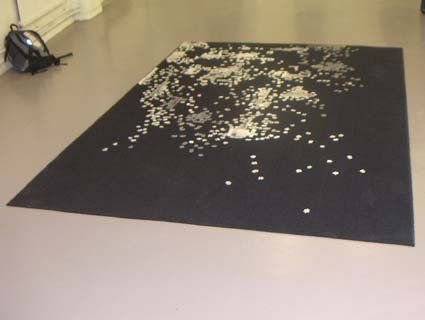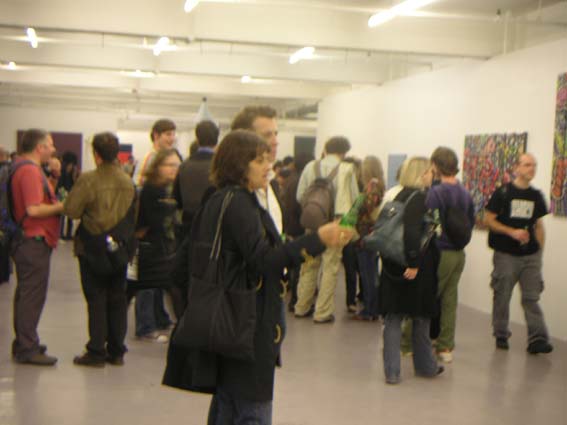MARC BAUER - JUAN BOLIVAR - MAURO BONACINA - PAULINE BOUDRY - NICK DAWES - LEONORE EASTON - MATT FRANKS- CLARE GASSON
MATHEW GOODING - HARUHI HAYASHI - SAM HERBERT - ANDY HSU - JULIAN HUGHES WATTS - MILO KELLER - HIROE KOMAI
LEE MAELZER - VIRGINIE MORELLO - SHAHRYAR NASHAT - JENNIFER NIEDERHAUSER - SANDRINE PELLETIER
STEPHANIE PFISTER - ANNAIK PITTELOUD - PAMELA RICHARDSON & KEVIN SMITH - JOHN RICHERT - SASHA ROULET - JOHN STARK
KORNER UNION - JULIE VERHOEVEN - ALEXIA WALTHER - RICHARD WATHEN - LAURA WHITE - NEIL ZAKIEWICZ - ZORRO ET BERNARDO
CURATED BY JUAN BOLIVAR, MARCO COSTANTINI AND JEAN-LUC MANZ
In collaboration with Lucy Mackintosh Gallery Lausanne, Switzerland
"It's okay to be crazy, but don't be insane"
-Puff Daddy
‘Eau Sauvage’ is an exhibition of contemporary London, Lausanne and Geneva based artists, initially conceived for the Lucy Mackintosh Gallery in Lausanne, Switzerland, where ‘Eau Sauvage’ part I took place in March 2006.
On one hand ‘Eau Sauvage’ refers to Christian Dior's famous fragrance for men, making us think of the artists in this show as international ‘jet set’ signifiers. Cultural commodities producing objects of luxury and desire. On the other hand the word 'sauvage' echoes the "Museum of Art Brut" in Lausanne; referring to the artist as 'the outsider'; obsessive and reclusive. Here meaning does not travel or translate well, like universal road signs or travellers cheques. It is hermetically caged and sealed.
The debate that arises from this duality hinges on how contemporary art performs a balancing act between both of these worlds. Between communication and incomprehension. Between what's internal and what's external. Personal knowledge and shared knowledge. ‘Eau Sauvage’ is the modern ‘brut’ a theoretical and actual hybrid of these two worlds.
The overall look of the show is intended to be more like a museum boutique, rather than a gallery. A 'Duty Free' art zone. Things lurking round corners; hung low and high, next to each other as we rush by in transit to our next destination.
………………………………………………………………………………………………………………
London Juan Bolivar, Mauro Bonacina, Nick Dawes, Matt Franks, Clare Gasson, Mathew Gooding, Haruhi Hayashi, Sam Herbert, Andy Hsu, Julian Hughes Watts, Hiroe Komai, Lee Maelzer, Pamela Richardson & Kevin Smith, John Richert, John Stark, Julie Verhoeven, Richard Wathen, Laura White, Neil Zakiewicz
Lausanne, Geneva Marc Bauer, Pauline Boudry, Leonore Easton, Raphael Julliard, Milo Keller, Virginie Morillo, Shahryar Nashat, Jennifer Niederhauser, Sandrine Pelletier, Stéphanie Pfister, Annaïk Pitteloud, Sacha Roulet, Körner Union, Alexia Walther, Zorro et Bernardo
Exhibition Dates: 19 May - 10 June
Gallery Hours: Fri, Sat & Sun 12 - 6 or by appointment +44 (0)20 7690 0603
This exhibition has been made possible with the help and support of
Arts Council England, Canton de Vaud, Ville de Lausanne and ProHelvetia
and Lucy Mackintosh Gallery
PRIVATE VIEW: Friday, 18 May 2007, 6-9 pm
performance by Leonore Easton at 7:30 pm
JUAN BOLIVAR
Since graduating in 2003 Juan Bolivar has curated several exhibitions (www.trailerart.net), including TRAILER's tenth show, 'Yabadabadoo' at Cell Project Space, London and 'Eau Sauvage' at the Lucy Mackintosh Gallery in Lausanne, Switzerland. (www.lucymackintosh.ch)
Bolivar's paintings deal with formalism and abstraction as a language reconfigured into fantasy, tragi-comical visions.
Lives and Works in London.
NICK DAWES
Notes on Painting 2006.
Since 1998 I have employed a system of self imposed rules to navigate and structure the activity of making a painting. The idea originally was to set a limitation on choice, make as few decisions as possible and act upon only those that were absolutely necessary. I thought that if the construction of the work was about a denial of choice then what was left out was as important as what was left in. Choosing to ignore the endless variety of the colour chart, and remaining neutral and objective towards the subject, I decided to concentrate on familiar objects that would delineate and control my decisions as a painter. I discovered that by using ordinary traffic signs as visual object matter I could reduce painting down to its basic component parts. Limited by a set of standard lines shapes and colours, the paintings could generate themselves, the signs would dictate how the paintings would be made, what colours should be used, what kind of support they would need, and the material required to paint them. I was also interested in the idea that through appropriation I could make a “figurative” painting without reverting to conventional figuration. Content could be specifically hijacked and re-injected within the realm of the readymade. Once I knew what to paint it was then a question of how to paint. If the objects on the paintings were prefabricated and mass produced it seemed accurate to employ similar materials to paint them. Deploying a craft heavy DIY aesthetic I made the decision to build the paintings from scratch, treating the work equally from concept to completion so that the same conceptual value would apply to the construction and preparation of the support as to the painted elements on it. The same would apply to the use of gloss paint and house painters brushes. Gloss paint had the right technical properties for a flat no-nonsense method of application, producing a smooth transition between sign and drip, emphasising the relationship between figure and ground, and drying as both surface and reflection. I also liked its inherent sense of nostalgia associated with modernist painting from the 1950’s and 60’s. In the 1990’s a number of painters turned to
process as a statement of fact rather than an outpouring of angst, and made paintings that seemed to concentrate purely on the abstract properties of the material and on the activity of
its application. I realised that by adopting this redundant formalist procedure I could use this method as a component to expand the field, blurring the boundaries between functionality and abstraction while generating formal difference from the narrowest procedure possible. By amalgamating process painting with found objects I could physically and conceptually subvert their formal and functional status, maximise the tension between order and chance, neutralise the opposition between expression and detachment, stress and remove touch simultaneously, while at the same time collide utilitarian mass culture and high modernist abstraction within a single gesture.
Lives and works in London
LEONORE EASTON
I am a British-Swiss performer. I’m working on a PhD in Performance Studies at Queen Mary University of London. My research is about the relations that language has with the body and the way in which Live Art tends to reveal the body’s implication in language production, especially when the latter becomes nonsense. This research is done both in theory and through practice, which means that my performances are linked to my exploration of the intrinsic relation between the body and language production.
CLARE GASSON
Clare Gasson looks to cinematic space and experience, though concentrating on sound, and the imagination of the audience – looking to the atmospheric and sensate. The work is often presented via sound systems. This may take the form of a CD for CD walkmans, or the sound may come out of a monumental sculpture/speakers. She is interested in questioning the authority of the medium. The work is disseminated through different media – often too these are repeated, for example the narration on the limited edition CD is also to be shown as a script in a journal.
MATT FRANKS
“The intensification of common dumb cartoon imagery is at the heart of Matt Frank’s sculptures. Taking conventional reduced two dimensional renderings of images such as skulls, nuclear bomb explosions, swirls and vortexes, Franks solidifies these graphic simplifications into three dimensional forms in ludicrously bright acidic or pastel colours. Composited into intricate near baroque, comical and outlandish objects, Franks’ sculptures don’t seems to be depictions of either straightforwardly inanimate things nor of creatures in their own right. Rather they seem to be bodies that lie somewhere between the two, hybrids with their own mysterious exuberance.” Copyright Suhail Malik 2004
courtesy Houldsworth Gallery
SAM HERBERT
Sam Herbert's recent paintings have examined the dichotomy between a romanticised view of an imperial past and the jarring reality of the exploitation that this lifestyle was founded upon. The paintings have an immediate familiarity derived from memories from historical novels, illustrations, sepia photographs or costume drama. His intention is to take these romanticised notions of the British Empire and turn them into paintings that seem hazy or nostalgic. By placing the viewer in a position that elicits an empathetic reaction poses a set of questions that reject a straightforward answer and require a re-examination of initial assumptions.
ANDY HSU
As you know, art is said to have derived from carving to show one’s existence and cave paintings to pray. I think the standards of beauty have changed with the times, the basic thoughts which put emphasis on nature and human being have been unchangeable. Therefore it is considered that we understand the artists message through the art works for nature and human beings.
JULIAN HUGHES WATTS
Julian Hughes Watts was born in Cardiff in 1969, studying BA Fine Art at Birmingham, completing Post-Graduate Fine Art at the Royal Academy Schools. Exhibitions include Seeking Tacit Utopias, Surface Gallery, Nottingham [2006], 10th Planet, London [2006], Eau Sauvage, Lucy Mackintosh Gallery, Lausanne, Switzerland [2006], DeptfordX [2005], Revolution by Trailer [2004], DeptfordX [2004], Century Gallery [2003], and Dustcamp [2002].
JOHN STARK
I am interested in the construction of things, film, literature, painting… For example; during the filming of Rosemary’s Baby Mia Farrow had a nervous breakdown. She then turned up on set one day with her hair cut short and the directors had to somehow incorporate this into the film only adding to its surprising narrative.
Recent paintings are made to order from an imaginary patron, Mr Karts.
Graduated from Royal Academy Schools 2004, Artist in Residence at Loughborough University 2004/05. Recent shows include ‘New Figurative Realism’ (Clapham art gallery), ‘Eau Sauvage’ (Lucy Macintosh, Switzerland).
LAURA WHITE
Laura White is interested in the way we read and view nature. How nature through the frameworks we set up can seduce us and provide us with unthreatening pleasure and entertainment, like visiting an aquarium, a zoo, or walking through urban parkland. This process of visual engagement, often in the work projected as a moving image is shattered by the viewers acknowledgement of the positioning, exaggeration and awkward arrangements of the image, or the presence of objects in the space, which slowly reveal a less entertaining view of nature, one that exposes its extreme manipulation and often threatening instability, whether that be through human contamination, misrepresentation, dislocation, or nature’s ability without any human intervention to destroy.
NEIL ZAKIEWICZ
Neil Zakiewicz carves foam and wood, hacking the shapes of oversized hands, animals and superheroes. These are monuments for a generation which no longer believes in monumental gestures. His recent sculpture “Pencil Holder” (2005) featured a giant Socialist Realist-style raised fist clutching a set of five brightly coloured pencils. Formerly a member of the curatorial group Unit, he completed an MFA at Goldsmiths in 2003 and has exhibited widely in the UK and abroad, including a solo exhibition in January at Bearspace.
Fieldgate Gallery Ltd.
copyright Fieldgate Gallery, 2021, all rights reserved

